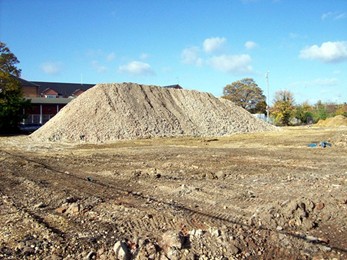|
The laundry site
development
MANNING ROAD
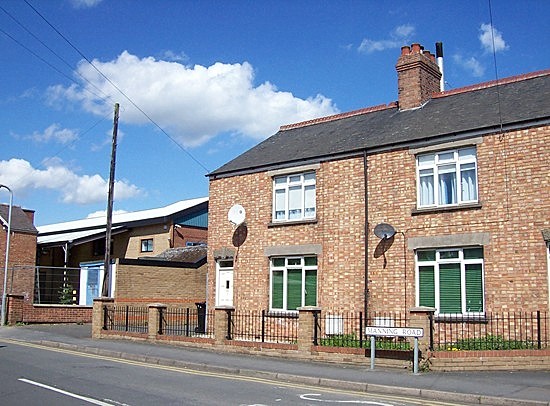
One of the most controversial
housing schemes in recent years has been for the laundry site at the
corner of Manning Road and Recreation Road which was submitted in November
2007 and finally approved by South Kesteven District Council in April 2009
after prolonged negotiations with the developers, Larkfleet Homes.
The site was vacated by Bourne Textile Services in the summer of 2008 when
the company re-located to purpose built premises on the Cherryholt Road
industrial estate at a cost of £800,000. The company retained the office
block at the Manning Road site but planning permission was subsequently
granted for residential development on the surrounding land.
The delay in granted planning permission was caused because Larkfleet
Homes refused to agree to a contribution of £211,629 for health care and
education demanded under the S106 agreement, the legal requirement to
assist the local infrastructure in return for being given planning
consent, insisting that it was too much and the amount was later
reduced to £155,130 with the payments phased according to the progress of
the building programme.
The development, however, did not meet with local approval with the town
council leading the protest because of the high density of dwellings
proposed. Larkfleet Homes applied to build 47 homes on the site which
covers 1¾ acres (0.7 hectares) comprising 16 apartments and seven two and a
half storey houses, 19 two storey houses and five
coach houses, the total to include 15 affordable houses. But councillors complained that this would be oppressive
over development, visually intrusive and likely to cause road and safety
problems, and that even 25 properties might be too many. Objections,
though, even from the local council with first hand knowledge of the
locality, were ignored and a planning report from South Kesteven District
Council said: “It is considered that the proposed scale and layout
reflects those of other residential developments in the surrounding area."
|
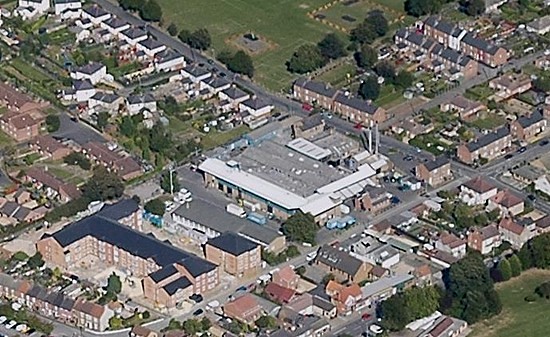 |
|
This aerial picture of the old laundry site
shows exactly the area available for the proposed 47 homes and that
occupied by surrounding council houses built during the previous
century, particularly those across the road in Alexandra Terraces
where two rows of eight houses each and their gardens occupy more or
less the same space while the plots in nearby Recreation Road are
even larger. |
Government policy is that housing is a basic human right for all and local
authorities are instructed to meet the requirements of the entire
community. Affordable housing, therefore, is meant to encompass both the
low cost market and subsidised accommodation which should be made
available to those on low incomes who cannot afford to buy on the open
market. The situation has been created in the main because most local
authorities have stopped building council houses and their responsibility
in this has in many cases been passed over to housing associations which SKDC tried to do with its 6,300 properties (535 of them in Bourne) in 2006
but was thwarted by the regulatory ballot in which 73% of tenants voted
against a transfer.
Therein lies a problem with new housing estates being built today.
Developers want to use the land for as many units as possible and as
government regulations require the inclusion of what it calls affordable
housing, this will obviously mean smaller properties. In the past thirty
years, we have seen new build houses shrink in dimension with
claustrophobic rooms, pocket sized gardens and garages hardly big enough
to squeeze in a family car. Now a small mix of houses that can be sold
more cheaply is being included in most developments although the sale
price for them remains relatively high, despite the drastic economies in
size.
Ironically, the answer to housing density for affordable homes from past
times can be seen in the immediate vicinity because the site is surrounded
by council houses, in Harrington Street, Ancaster Road, Recreation Road
and Alexandra Terraces. These were all solidly built by Bourne Urban
District Council for rent by large families in the three up and two down
style during the last century, mainly between 1914 and 1960 when the
population was less than half of what it is now, and are still providing
serviceable accommodation with a long life expectancy ahead. Many have
also been bought under the Right to Buy scheme introduced by Margaret
Thatcher under the Housing Act of 1985, thus allowing sitting tenants own
the homes where they lived at discount prices.
Council houses are spacious with large gardens and lend themselves to
continuous development, maintenance and even enlargement by enthusiastic
owners and they have held their value, selling for much higher prices than
the so-called affordable houses of today which are frequently bought by
housing associations and rented out to problem and needy families. The
policy of locating them within new residential areas of up market Georgian
style properties is questionable and the evidence is that some tenants are
causing friction with the neighbours, which appears to be happening at the
town's biggest recent residential development at Elsea Park.
Soaring land prices mean that developers need to cram each acre with as
many houses as possible to maintain their high profits and the result is
that they are being built upwards instead of outwards, a hybrid of houses,
flats and maisonettes, but they are becoming smaller still with minute
gardens and parking spaces rather than garages while many forecast that
the close density and sparse accommodation provided in some estates is
creating the slums of the future.
SKDC appears to be intent on approving every housing application that
comes its way, if not at first time of asking then certainly on appeal,
because more homes mean more council tax which supports the authority’s
high-employment-high-salary ethic, in this case an additional £60,000 or
so a year, but does little for the appearance of the town which is fast
becoming a dumping ground for every unwanted residential development,
irrespective of style, suitability and space. The people of Bourne were
therefore saying that enough is enough although the town council appeared
to be powerless to act when unacceptable building developments are
proposed, despite having a regular input into the planning process at
Grantham. Their warnings over the Manning Road development were loud and
clear but apparently no one had been listening. Councillors therefore
claimed that they have been totally ignored over the issue and the
strength of feeling has been summed up by one of them, Guy Cudmore (Bourne
East), in a contribution to the Bourne Forum on Wednesday 20th February
2008:
Within ten years time, the quality of life in this town which we all love
and which has induced many of us to stay here will be gone. The question
will be asked, whither? The answer will be that persistent inner-city
housing densities applied to a small market town will have brought
inner-city problems. One cannot cram so many people all so closely
together with no garden and nowhere to park without causing pressure and
stress and conflict. Then we will remember councillors in the nineties and
noughties have not stood up for this town in the face of vulturous
speculative developers of dormitory accommodation aided and abetted in
their lupine avarice by local planning officialdom.
Unfortunately, there are other similar sites around the town awaiting
development and if this is a precursor of things to come, it does not
auger well for the future appearance of Bourne and a decade hence,
Councillor Cudmore’s predictions may well have become reality.
Once the Manning Road development was approved, Richard Edwards, planning
director for Larkfleet Homes, told the Stamford Mercury: "Obviously we are
very happy with the outcome because it is a scheme we have been involved
with for the past 18 months. It is an important site which we hope to
develop as soon as we can." (April 24th).
Others were less happy. The Mayor of Bourne, Councillor Shirley Cliffe,
told the newspaper that she was disappointed by the decision. "We do not
need any more housing, especially that amount. I believe we need more
shops." Under the S106 agreement, Larkfleet is now required to pay half of
the S106 contribution after the 15th house is completed with a further 25%
after the 24th house is finished and the balance at the end of the
development or two years from the commencement of the first house.
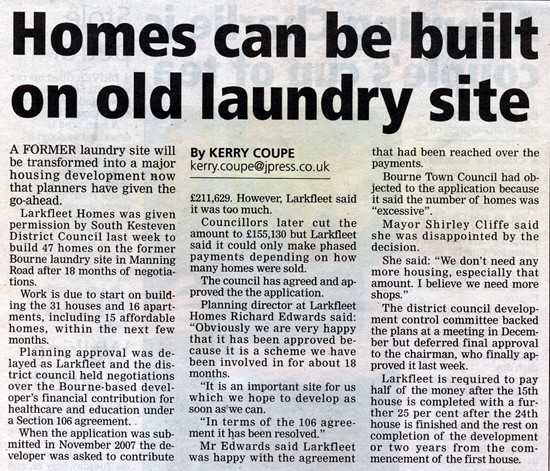
News report from The Local newspaper Friday 1st May 2009
|
MORE VIEWS OF THE OLD LAUNDRY SITE |
|
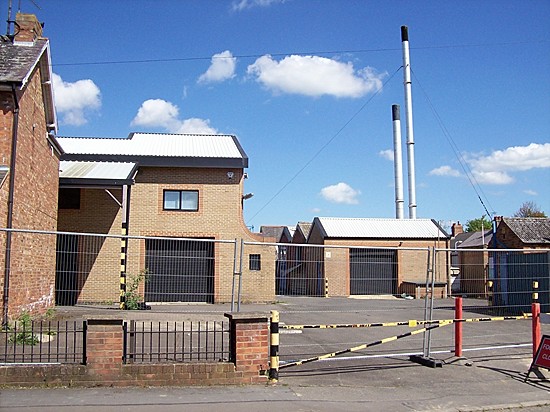 |
|
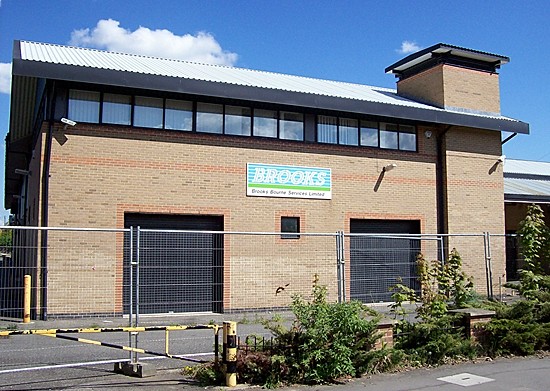 |
|
 |
|
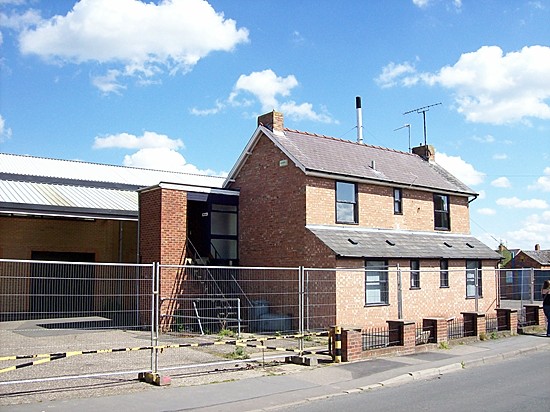 |
|
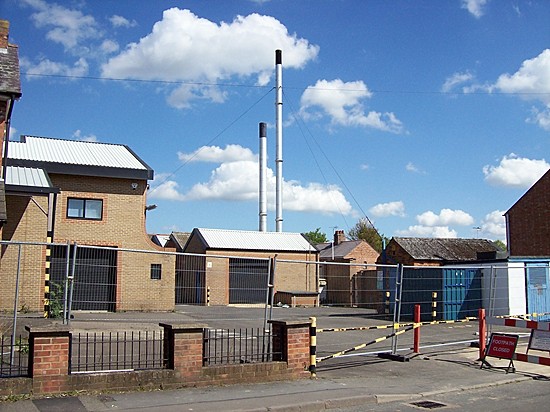 |
|
DEMOLITION BEGAN IN JULY 2009 |
|
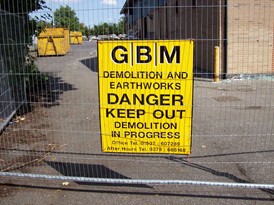 |
 |
|
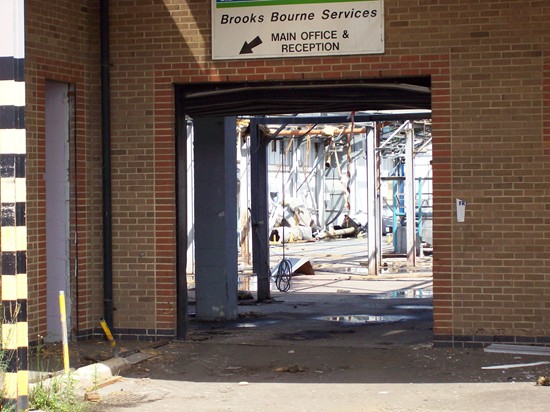 |
|
 |
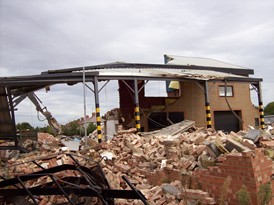 |
|
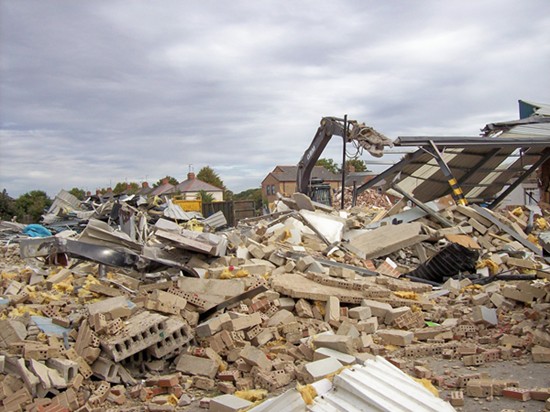 |
|
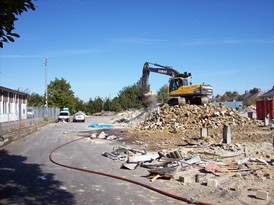 |
 |
|
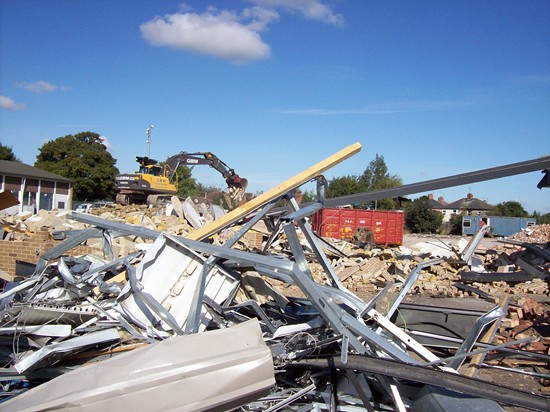 |
|
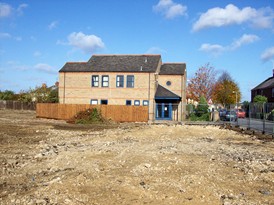 |
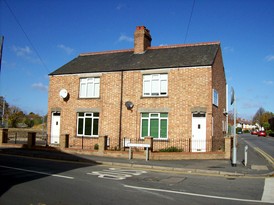 |
|
|
|
The two remaining properties, the old offices
(above left) and the two former council houses later used as a rest
room for the workers (right), while the heap of spoil which is all
that remained of the main buildings awaits the start of
construction. |
|
THE NEW ESTATE TAKES SHAPE |
|
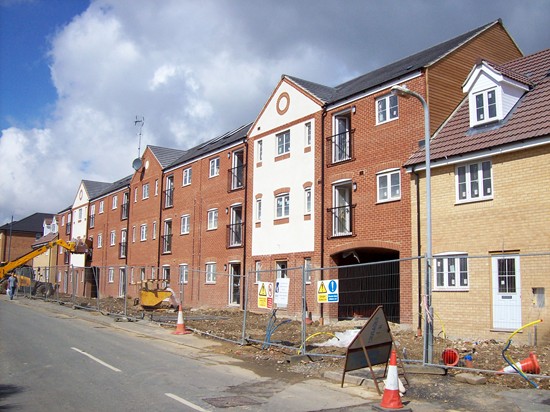 |
|
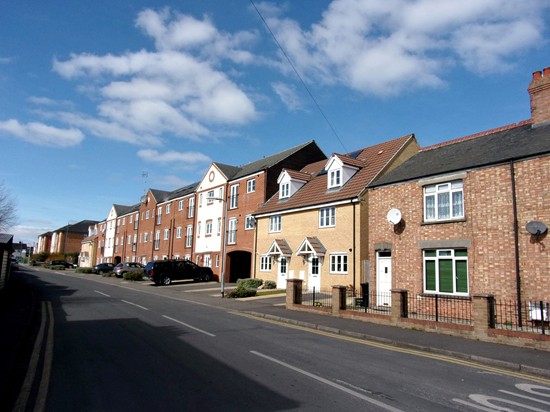 |
|
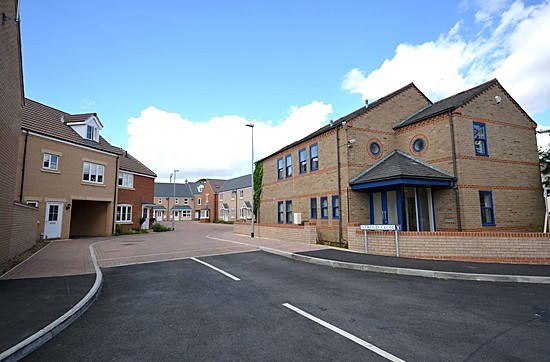 |
|
The entrance to the estate from Harrington Street, now named
Stroud Close
after the founder of Bourne Hygienic Laundry, Ernest Stroud
(above) and (below) a nearby terrace named Beryl Mews after the
minesweeper adopted by Bourne during the Second World War. |
|
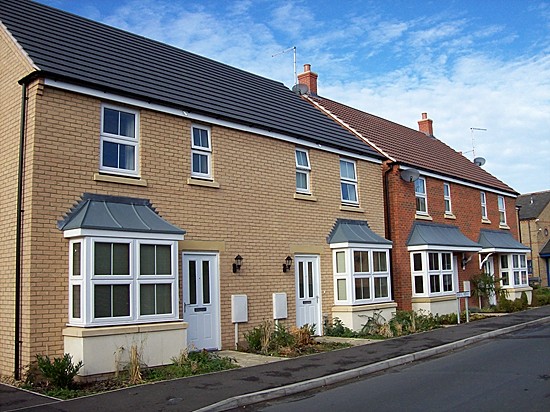 |
REVISED MARCH 2015
See also
Housing in Bourne
Bourne Textile
Services

Go to:
Main Index Villages
Index
|




















